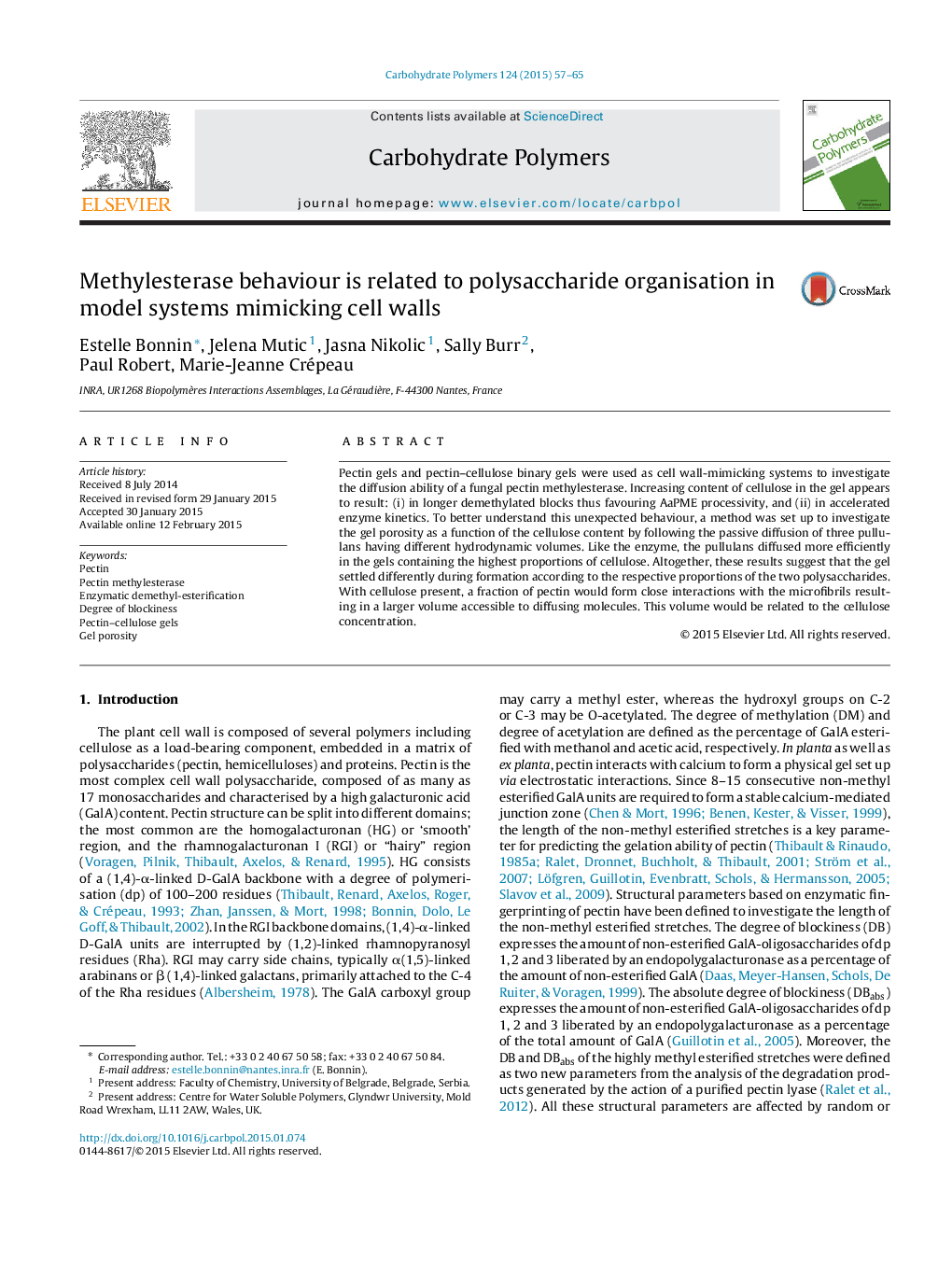| Article ID | Journal | Published Year | Pages | File Type |
|---|---|---|---|---|
| 7788811 | Carbohydrate Polymers | 2015 | 9 Pages |
Abstract
Pectin gels and pectin-cellulose binary gels were used as cell wall-mimicking systems to investigate the diffusion ability of a fungal pectin methylesterase. Increasing content of cellulose in the gel appears to result: (i) in longer demethylated blocks thus favouring AaPME processivity, and (ii) in accelerated enzyme kinetics. To better understand this unexpected behaviour, a method was set up to investigate the gel porosity as a function of the cellulose content by following the passive diffusion of three pullulans having different hydrodynamic volumes. Like the enzyme, the pullulans diffused more efficiently in the gels containing the highest proportions of cellulose. Altogether, these results suggest that the gel settled differently during formation according to the respective proportions of the two polysaccharides. With cellulose present, a fraction of pectin would form close interactions with the microfibrils resulting in a larger volume accessible to diffusing molecules. This volume would be related to the cellulose concentration.
Related Topics
Physical Sciences and Engineering
Chemistry
Organic Chemistry
Authors
Estelle Bonnin, Jelena Mutic, Jasna Nikolic, Sally Burr, Paul Robert, Marie-Jeanne Crépeau,
